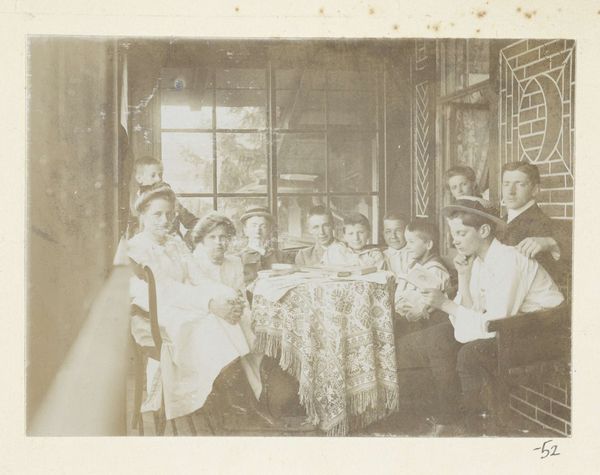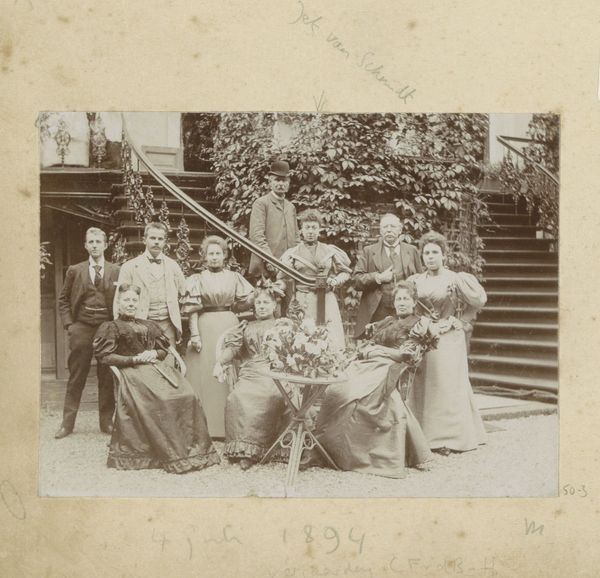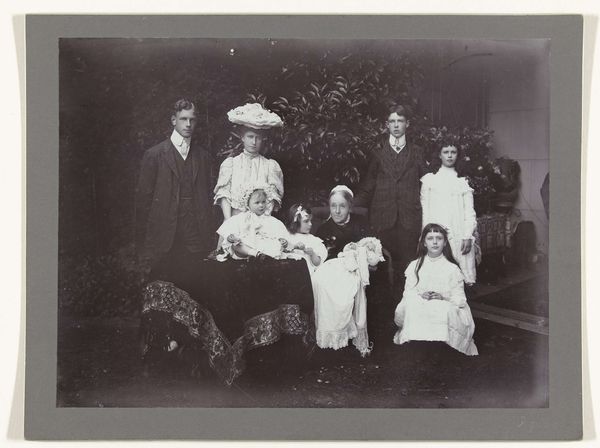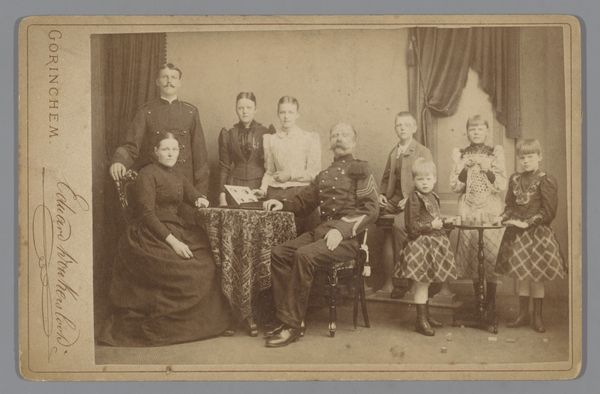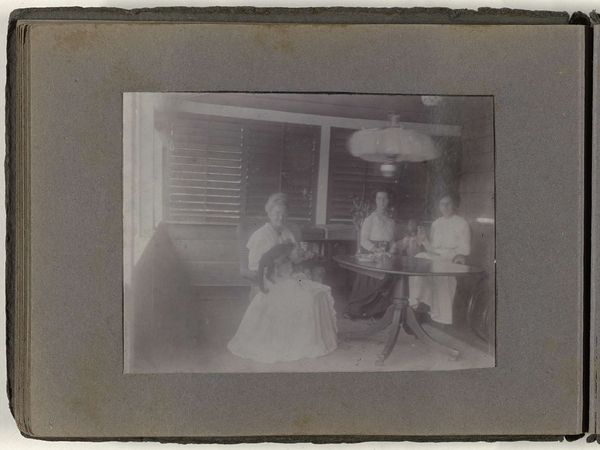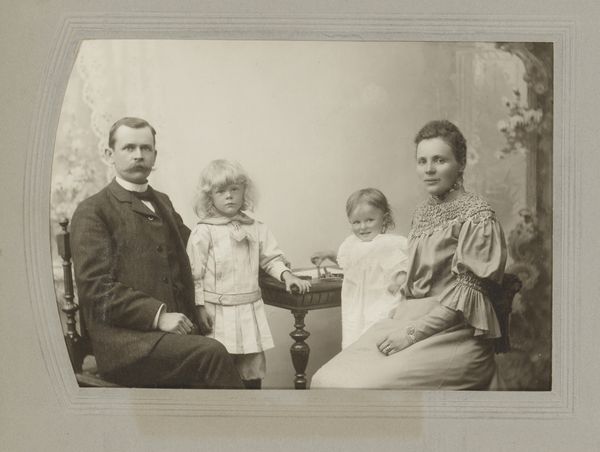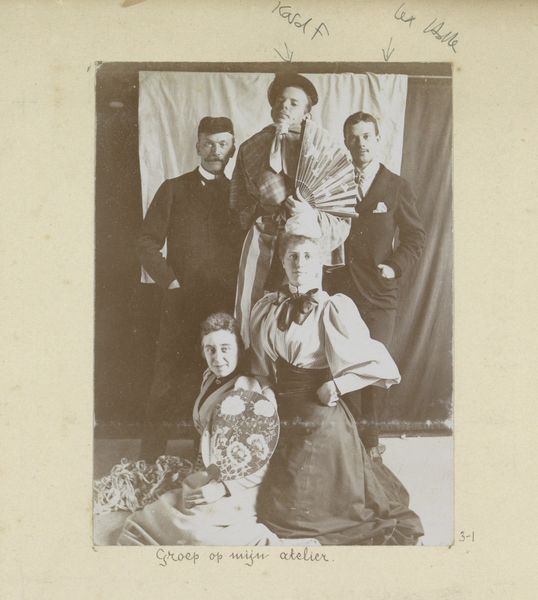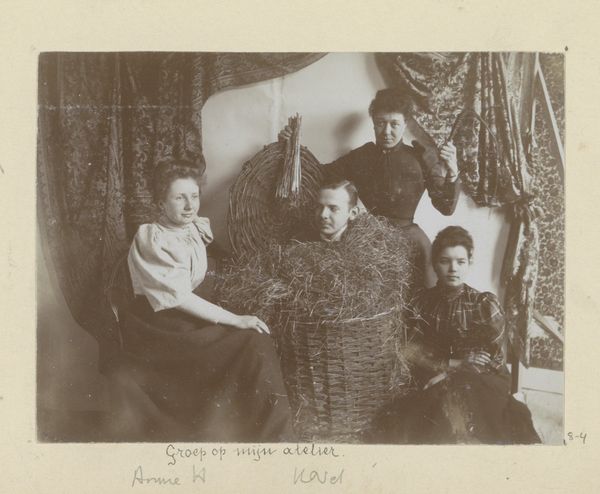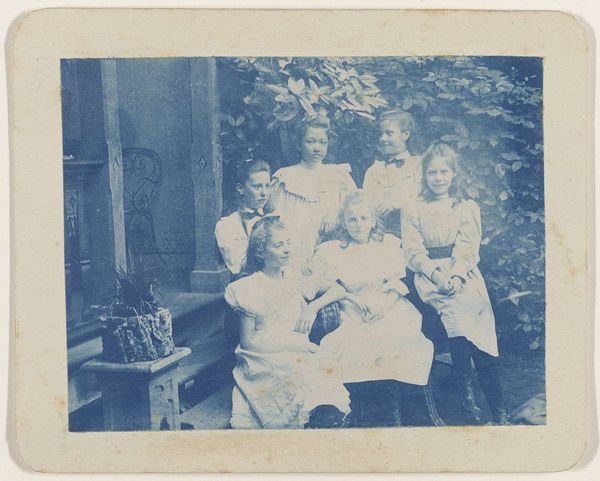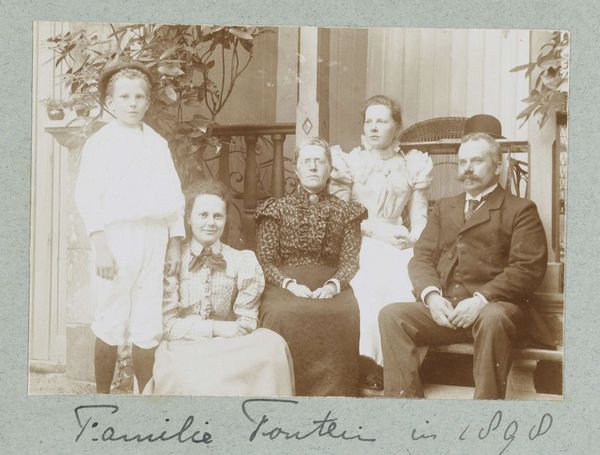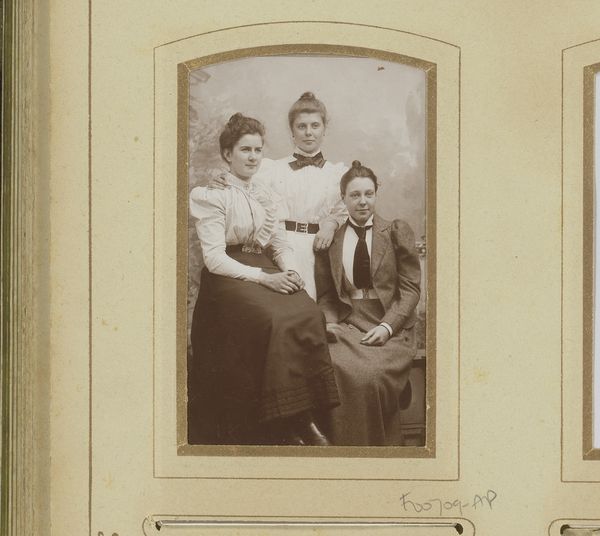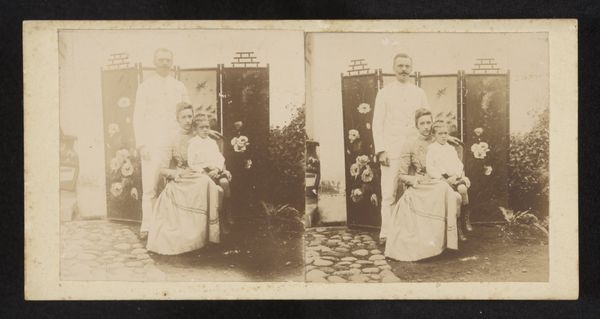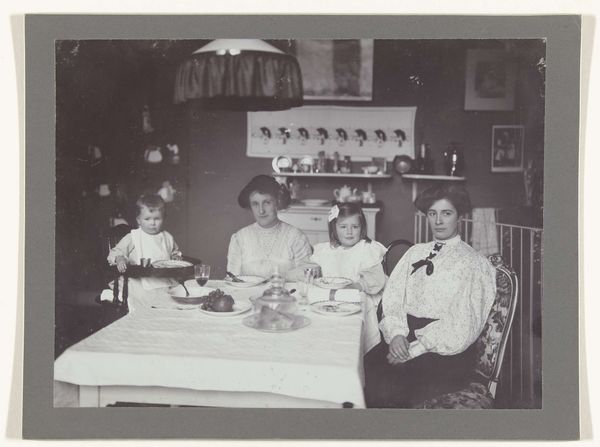
Twee stellen met baby's waaronder Klaas Kleiterp en zijn vrouw Tine Kleiterp-Vermeulen met 8 weken oude Klaas (rechts) in Malang 1920
0:00
0:00
photography
#
portrait
#
photography
#
historical fashion
#
orientalism
#
genre-painting
Dimensions: height 108 mm, width 79 mm
Copyright: Rijks Museum: Open Domain
Curator: This photographic print, dating from 1920, shows two couples each with a baby in Malang. According to the inscription it shows Klaas Kleiterp and his wife Tine Kleiterp-Vermeulen with their 8-week old baby Klaas. Editor: My first impression is of formal intimacy—it feels poised, but also deeply personal. The light, the textures...there’s an almost oppressive stillness to it. Curator: Oppressive, that's interesting. Considering the era, Indonesia during Dutch colonial rule, this image speaks to a very specific social and political dynamic. The very act of documenting these families in a domestic setting normalizes a colonial presence. Editor: Yes, I see what you mean, but also the clothing…all whites and creams, with stark rigidity in their pose, as well as the carefully embroidered tablecloth. To me it acts as a symbolic staging—almost performative—of cleanliness and order, reflecting a desire to impose cultural values. Curator: I agree it presents an interesting visual strategy, contrasting innocence of early-age with military uniform. Both children dressed in very similar attire, a potential social commentary around inherited status or cultural expectations based on birth. Editor: Looking closer, the way the women are holding the babies – there's an iconic Madonna-like quality to that positioning. Is there also perhaps an attempt to indigenize European imagery or to represent it locally? How would this photograph been received and understood both in Malang and the Netherlands? Curator: A great point. How does the symbolism of motherhood intersect with colonial power? This photograph offers a lens for exploring identity, belonging, and power relations during a specific historical moment, when the personal becomes overtly political. Editor: It's fascinating how an image so seemingly straightforward becomes a portal into these intricate layers of historical meaning, all mediated by very simple symbolism and presentation. Curator: Indeed, this photograph makes us consider not just what we see, but the unseen power structures that shaped the lives captured within it.
Comments
No comments
Be the first to comment and join the conversation on the ultimate creative platform.
